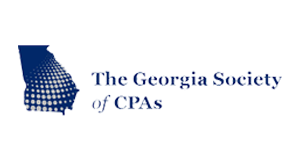Is it possible to have too much taxable money?
Most people today would hear that question and practically scream, “Absolutely NOT! You can NEVER have too much money!”
But we’re not just talking about “money.” We’re talking about “taxable money.” Can you have too much of that?
The Three “Buckets”
Before we dive in, let’s discuss the three different “buckets” into which people typically put their money.
- Traditional Money
This is money one puts into a traditional TSP (thrift savings plan), a traditional IRA (individual retirement account), a traditional 403(b) (i.e., a tax-sheltered annuity or TSA plan offered by some public schools and 501(c)(3) organizations) –or any other traditional form of retirement money you have.
This is money you earned that you diverted (i.e., invested) into a traditional retirement account, pre-tax. You got a tax deduction for doing this. In short, you haven’t yet paid taxes on this money.
At some point in the future, you will take out distributions from this “bucket,” and those will be fully taxable at whatever your tax bracket happens to be.
- Roth Money
Next, we have the Roth money “bucket”. This is money that you go ahead and pay taxes on and then put into your Roth account. You don’t get a tax deduction for your Roth contribution, but your money gets to grow tax-free. As long as you wait till age 59 1/2 and at least five years from the time you started the account, you can then access the growth without any penalty or taxes. All gains are tax-free under those two rules.
- Taxable Money
Our third bucket is taxable money. This is money you were paid. It went into your checking account and you paid taxes on it.
Perhaps as it started to grow, you put some of these funds into a money market account or purchased some CDs (certificates of deposit). Maybe you moved some of that into an investment account, like a Vanguard account or some other fund.
There are lots of different options for taxable money. Depending on where you put it, the growth may be taxed at your tax bracket, which is the case with bank account interest or CDs.
This money may be taxed based on the capital gains rate you have. Let’s say you have some stocks or mutual funds, and they go up in value. If you sell them, you will have to pay capital gains on the growth. If you do that within one year, that’s considered short-term capital gains. You’ll have to pay taxes at whatever your tax bracket specifies.
If you sell those stocks after one year, you’ll have to pay long-term capital gains taxes. That’s preferable, but the gains are still taxable. So, as you are accumulating money for retirement, these are the three basic buckets into which you can put money.
Answers and Options
So, back to our question: Can you have too much in the taxable bucket?
I would argue “Yes.” When you think of the different attributes of these “buckets,” it makes sense that the Roth account–the “tax-free forevermore” account–is the account in which you would love to have all of your money. If you could just wave a magic wand and have all of your money in Roth, that would be great. There are huge benefits to that.
The problem is you can’t do it that way. There’s no magic wand. So, are there ideal balances to have in traditional accounts? At Christy Capital Management, we think there are.
Generally speaking, a taxable account is a great place to keep your emergency fund. You always want to have some liquid money that you can get your hands on quickly. You never know when you might need a lump of cash to replace a roof or a car or an HVAC system.
However, if that taxable “bucket” gets too big–whatever “too big” means to you–you may want to do some planning and start maxing out a Roth IRA (assuming you’re eligible to do that). Or, you could max out a Roth TSP, if you’re eligible to do that.
You could do some Roth conversions (i.e., go ahead and pay the taxes owed on some of your traditional money and then move that money to your Roth where it can grow tax-free).
The point is there are certain tax advantages with your Roth bucket and your traditional bucket that your taxable bucket does not have. So, beginning to shift money from the taxable bucket to those other retirement buckets can make sense tax-wise.
You may wonder, Is it possible to have too much money in your traditional bucket? I would argue that it is. The traditional bucket gets to grow tax-deferred, which is great. But at some point, required minimum distributions (RMDs) kick in and you are required to begin withdrawing that money. And all those distributions are taxable.
Do you have a Retirement Financial Blueprint?
One of the things we do at Christy Capital is create financial blueprints for people who want to take the mystery (and uncertainty) out of retirement. In that blueprint, we can show you at age 73, when your mandatory RMDs kick in, what size distributions you can expect, and how much that additional “income” will move you up the tax bracket.
Some of the federal retirees we work with realize they can live comfortably off of their pension, Social Security, and a spousal Social Security. If that’s you too, it means your traditional bucket can keep accumulating all that growth over all those years as you head towards RMD age.
Just know that at that time, whether it’s 73 or 75 for you, you’ll have to start taking out around 4% of the balance. For some people, that could mean having to take out $80,000 a year!
Imagine your tax situation if you were forced to take out a really large distribution–one that you didn’t really need to fund your lifestyle. It would push you right up the tax bracket, and you wouldn’t have any control over that. That’s why I argue that you can have too much money in your traditional bucket.
What about in a Roth account…can you have too much there? I would argue that you probably can’t. Ideally, you’d want to have all your money there so all that growth was non-taxable.
Okay, enough explanation. How about some options? What can you do now to minimize your tax obligations?
For one, you can max out your contributions to your TSP. If that means that you need to live off of some of the money that you have in your taxable account, so that you can max out the other, you may want to do that.
Or, if you’ve already maxed out your TSP, then talk with your financial advisor and see if you can max out a Roth IRA, one for you and one for your spouse. Just know that this strategy is subject to certain income limits.
You may want to consider a properly structured life insurance policy where you put extra money in that for the minimum premium. There are ways of setting that up so that you can capture some tax advantage growth while you’re also getting a death benefit that would also double as long-term care.
Just remember that when we’re talking life insurance, you are primarily purchasing it for the death benefit. However, there are some advantages to certain types of policies as they relate to taxation. If you have a bunch of taxable money and don’t know where to put it, life insurance may be an option for you. Again, always consult with a trusted advisor.
The main takeaway here is to realize that you can accumulate money in three different “buckets.” Each has certain advantages; each has features you may not like.
That’s why it’s good to get some planning help. You don’t just want to save money, willy-nilly, in any old type of account. That typically doesn’t work out well long-term.
Perhaps now you’re thinking I should have more money in a Roth account! And simultaneously wondering But have I waited too long?
If so, check out our video “Is It Too Late to Start a Roth TSP?” [Need link]
As always, if you’re looking for some guidance with your federal retirement or any other sort of retirement planning, visit our website christycapital.com, and click the green button that says TALK WITH AN ADVISOR. We’ll be in touch right away.







